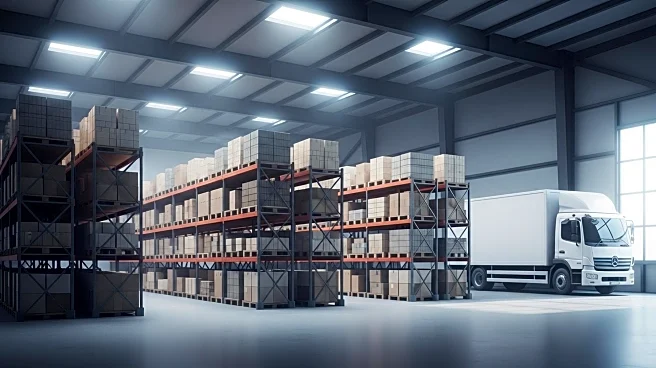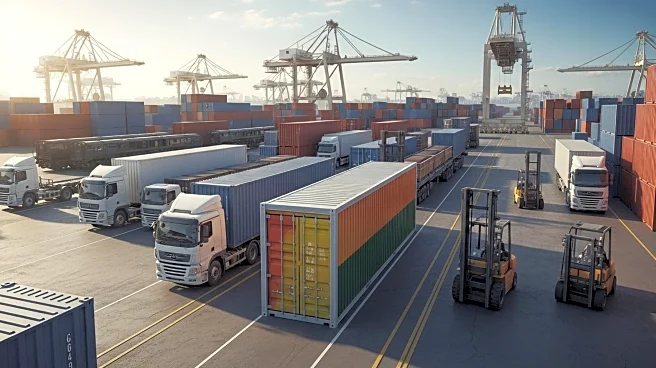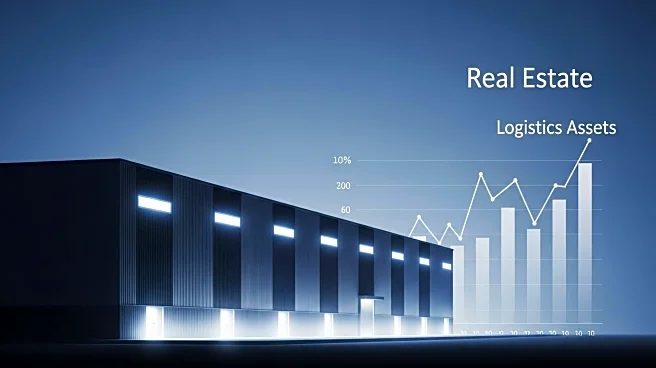What's Happening?
The Logistics Managers' Index (LMI) for September indicates a slowdown in the logistics sector's growth, with a reading of 57.4, down from August's 59.3. This marks the lowest level since March and the second-lowest this year. The LMI, a collaborative project among several universities and supported by the Council of Supply Management Professionals, measures growth based on eight components, including inventory levels, warehousing capacity, and transportation utilization. The report highlights a decline in transportation utilization and prices, with transportation utilization dropping to its lowest September reading in eight years. Despite the slowdown, warehousing prices remain robust, although they experienced the largest drop among the sub-indices.
Why It's Important?
The slowdown in logistics growth reflects broader economic trends and impacts various stakeholders, including shippers, logistics providers, and consumers. As transportation and warehousing costs decline, logistics companies may face pressure to adjust pricing strategies and operational efficiencies. The sector's performance is crucial for maintaining supply chain stability, especially during peak seasons like the holiday period. The report's findings suggest potential challenges in meeting increased demand and maintaining service levels, which could affect consumer satisfaction and business profitability.
What's Next?
The logistics sector may need to adapt to changing market conditions by leveraging technology and optimizing operations to maintain growth. Stakeholders might explore strategies to enhance efficiency and reduce costs, such as investing in automation and integrated systems. The upcoming holiday season will test the sector's ability to handle increased volumes, and companies may need to prepare for potential disruptions or shifts in consumer demand.
Beyond the Headlines
The logistics sector's performance can influence broader economic indicators, such as employment rates and consumer spending. A sustained slowdown could impact job creation within the industry and affect related sectors, including manufacturing and retail. Additionally, the sector's adaptation to changing conditions may drive innovation and technological advancements, potentially reshaping logistics operations and supply chain management.











